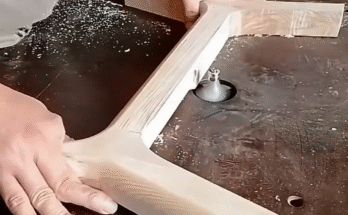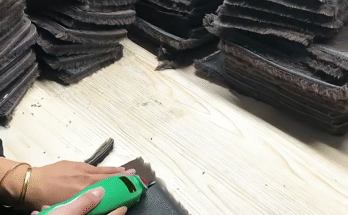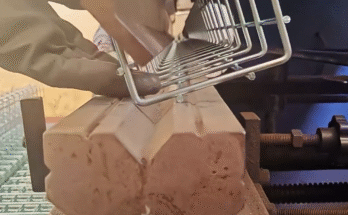Water jet cutting is a highly versatile and precise machining process that uses a high-pressure stream of water, often mixed with an abrasive substance, to cut through a wide range of materials, including hard and brittle ones like ceramic tiles and even diamonds. This cold cutting process is ideal for materials sensitive to heat and offers exceptional accuracy and intricate cutting capabilities. Let’s explore the step-by-step journey of water jet cutting.
Step 1: Design and Programming 💻
The journey begins with meticulous planning and digital preparation.
Design Creation: The desired cutting pattern is designed using Computer-Aided Design (CAD) software. This design specifies the exact dimensions, shapes, and intricate details of the cuts. Nesting (for efficiency): For multiple parts, the designs are “nested” on a digital representation of the material sheet to minimize waste and optimize material usage. CAM Programming: The CAD design is then translated into machine-readable instructions using Computer-Aided Manufacturing (CAM) software. This program dictates the water jet’s path, speed, pressure, and abrasive flow. Simulation (Optional but Recommended): Many CAM systems allow for simulation of the cutting process to identify potential errors or collisions before actual cutting begins. Step 2: Material Preparation and Loading 🏗️
Preparing the material for the cutting process.
Material Selection: Select the appropriate tile (ceramic, porcelain, natural stone) or diamond for cutting. Ensure it meets the required specifications for thickness and quality. Cleaning: Clean the surface of the material to remove any dust, debris, or oils that could interfere with the cutting process or contaminate the water jet system. Secure Placement: The material is carefully placed and secured onto the water jet cutting table. This table often has a slatted design or a water tank beneath to dissipate the energy of the water jet after it passes through the material. Proper securing prevents movement during cutting, which could lead to inaccuracies. Step 3: Water Jet System Setup ⚙️
Configuring the water jet machine for optimal performance.
Water Supply: Ensure a clean, demineralized water supply is connected to the intensifier pump. Water quality is crucial to prevent nozzle clogging and maintain system longevity. Abrasive Loading (for tiles and diamonds): For cutting hard materials like tiles and diamonds, an abrasive garnet (or other suitable abrasive) is loaded into a hopper. This abrasive will be mixed with the high-pressure water stream. Nozzle Selection: Choose the correct cutting nozzle (orifice and mixing tube) size based on the material type, thickness, and desired cut quality. Pressure Setting: Set the desired water pressure, typically ranging from 30,000 to 90,000 PSI (pounds per square inch), depending on the material’s hardness and thickness. Diamonds require extremely high pressures. Abrasive Flow Rate: Adjust the abrasive flow rate. Too little abrasive will reduce cutting power, while too much can lead to excessive wear on components and a rougher cut. Step 4: High-Pressure Water Generation and Abrasive Mixing 🌊
The core of the water jet cutting technology.
Intensifier Pump: A high-pressure intensifier pump takes the incoming water and boosts its pressure to extreme levels. This is typically achieved using a hydraulic system that drives plungers to compress the water. Water Delivery: The super-pressurized water is delivered through high-pressure tubing to the cutting head. Orifice: The water passes through a tiny jewel orifice (often sapphire or diamond) within the cutting head, which converts the high-pressure water into an incredibly thin, high-velocity stream. Mixing Chamber: For abrasive cutting, the high-velocity water stream then enters a mixing chamber where it creates a vacuum, drawing in the abrasive garnet from the hopper. Mixing Tube: The water and abrasive particles are thoroughly mixed within a carbide or diamond mixing tube, forming a coherent, highly erosive cutting stream. Step 5: Cutting Process ✂️
The actual cutting of the material.
Initiate Cut: The water jet cutting head, controlled by the CAM program, moves to the starting point of the cut. The high-pressure abrasive water jet is then activated. Following the Path: The cutting head precisely follows the programmed path, with the abrasive jet eroding the material away. The speed of the cut is carefully controlled to achieve the desired edge quality and minimize taper. Pierce Point: For internal cuts, the jet will “pierce” the material, creating a starting hole before continuing the cut. This piercing process is often slower to prevent material cracking or delamination. Cool Cutting: A key advantage is that water jet cutting is a cold process, meaning it generates very little heat. This prevents thermal distortion, cracking, or material changes in heat-sensitive materials like certain tiles or precious diamonds. Step 6: Post-Cutting and Finishing 🧼
After the cutting is complete, the parts are prepared for their next stage.
Part Removal: Once the cutting is finished, the cut parts are carefully removed from the cutting table. Rinsing: The cut parts are rinsed with clean water to remove any remaining abrasive particles or cutting residue. Drying: The parts are thoroughly dried. Edge Finishing (Optional): While water jet cuts are generally clean, some materials or applications might require additional edge finishing, such as light sanding or polishing, to achieve a perfectly smooth or desired aesthetic. For diamonds, this step would involve expert polishing and faceting. Quality Inspection: The cut parts undergo a thorough quality inspection to check for dimensional accuracy, edge quality, and any defects. The Edge of Innovation: Why Water Jet? 💡
Water jet cutting offers unparalleled advantages for materials like tiles and diamonds, where precision, minimal material waste, and the absence of heat-affected zones are critical. Its ability to create intricate designs and cut through incredibly hard substances without damaging their integrity makes it a cornerstone of modern manufacturing and artistic creation.



